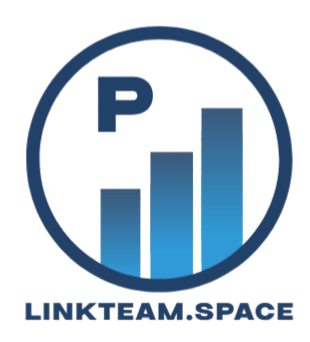Understanding Your Audience
One of the foundational elements of a successful webinar is a deep understanding of your audience. Knowing who your attendees are can significantly influence the content and format of your presentation. Researching audience demographics, interests, and pain points enables you to craft a message that resonates with them, ultimately leading to enhanced engagement and interaction during the webinar.
To begin, consider utilizing various tools and methods to conduct audience research. Surveys and questionnaires can be distributed prior to the webinar to gather information about participants’ backgrounds, roles, and expectations. Additionally, leveraging data analytics from your websites, such as Google Analytics, can provide insights into user behavior and preferences, allowing you to identify trends relevant to your audience. Social media platforms also offer valuable data points, including audience interests and discussion topics that may be relevant to your content.
Once you have gathered sufficient data, analyze it to discover common themes and pain points among your audience members. Understanding these challenges enables you to tailor your webinars to address specific needs effectively, thus increasing the likelihood of creating a meaningful experience for attendees. For instance, if your research reveals that your audience is primarily comprised of professionals seeking to enhance their skill set, your content should prioritize practical advice and actionable takeaways.
Furthermore, consider the format of your webinar in relation to your audience’s preferences. For example, if analytics indicate that your target demographic favors interactive discussions, incorporating Q&A sessions or polls can facilitate deeper engagement. By aligning your content and delivery style with the needs of your audience, you can foster a more personalized experience that encourages meaningful interactions and enhances the overall value of your webinar.
Technical Preparation: Setting the Stage for Success
Effective technical preparation is essential for ensuring a successful webinar experience. To begin, it is imperative to invest in quality equipment. High-definition cameras and microphones play a critical role in delivering clear visuals and audio. Participants are more likely to engage with a webinar that has professional-grade audiovisual quality. Therefore, it is advisable to purchase a reliable microphone to capture your voice clearly and a camera capable of broadcasting in at least 720p resolution to maintain a professional appearance.
The internet connection is another foundational element of your webinar setup. A stable and high-speed internet connection is vital to avoid disruptions during your presentation. It is strongly recommended to use a wired Ethernet connection as opposed to a wireless one, as this minimizes the risk of disconnection or latency issues. Prior to the event, conduct multiple speed tests to ensure your bandwidth is sufficient for streaming.
Familiarity with the webinar platform is crucial. Each platform offers unique features such as screen sharing, chat functions, and polling options that enhance participant interaction. Take the time to explore these tools in advance, allowing you to utilize them effectively during the session. Additionally, familiarize yourself with the settings that allow you to manage participants and adjust audio and visual elements as needed.
To avoid technical glitches, it is beneficial to create a checklist for testing all equipment and software ahead of time. Perform a complete run-through at least one or two days prior to the webinar. Test your cameras and microphones, check the functionality of shared screens, and ensure that backup tools are ready if needed, such as an alternate device or hotspots. This proactive approach will help you address potential issues before they arise, ensuring a smooth delivery on the day of your presentation.
Creating Engaging Content: What to Present and How
Developing compelling content for a webinar is essential for engaging your audience and ensuring that your message resonates effectively. A well-structured presentation serves as the backbone for holding participants’ attention, guiding them seamlessly through your topics. Consider starting with a clear outline that defines the key points you intend to cover. Each section should build upon the previous one, creating a logical flow that helps participants follow along and maintains their focus.
Utilizing visuals is another crucial element in crafting an engaging webinar. High-quality images, infographics, and slides make complex information more digestible and can significantly enhance understanding. When integrating visuals, ensure they complement the narrative rather than overwhelm it. Strive for a balance between text and imagery to create a visually appealing presentation that supports your spoken content.
Incorporating storytelling techniques can significantly elevate engagement levels. Real-life examples and anecdotes not only personalize the information but also make it more relatable for participants. By weaving stories into your presentation, you foster an emotional connection, which can enhance retention and encourage discussion. Additionally, actionable takeaways should be provided at the end of segments to give attendees practical insights they can apply immediately after the session.
Interactive elements such as Q&A sessions and polls are vital for fostering audience engagement during webinars. Clearly define opportunities for interaction up front to encourage participation throughout the presentation. Integrating live polls can gauge attendees’ opinions on various topics while also breaking the monotony. By encouraging questions and discussions, you create a collaborative environment that can lead to richer conversations and deeper insights.
By focusing on these best practices, you can create a compelling and engaging webinar that not only informs but also captivates your audience, enhancing their overall experience and maximizing the effectiveness of your presentation.
Post-Webinar Follow-Up: Maximizing Your Impact
Following a webinar, the significance of a well-structured follow-up cannot be overstated. This phase is critical for sustaining the momentum generated during the event and ensuring that the efforts invested in preparation yield valuable long-term benefits. One effective strategy for post-webinar success is to solicit feedback from attendees. This can be accomplished through surveys or feedback forms that assess the event’s content, delivery, and overall experience. Analyzing this feedback not only helps in evaluating the effectiveness of the webinar but also highlights areas where future sessions could be improved.
Additionally, sending out thank-you emails is a vital component of follow-up communication. These messages should express gratitude for attendees’ participation and reinforce the key takeaways from the webinar. Including a link to the recorded session in the email allows participants who may have missed specific segments to engage with the content at their convenience. Such accessibility enhances the value of the experience, prompting attendees to revisit the material or share it with others, increasing its reach.
Moreover, providing supplementary resources related to the webinar topics can significantly increase the educational impact. These may include downloadable materials, relevant articles, or links to related webinars. This proactive approach fosters continued engagement, positioning you as a resourceful thought leader in your field. It can also open avenues for future discussions and collaborations, leveraging the connections established during the event. By maintaining these relationships, you create opportunities for networking and knowledge sharing, which can be beneficial long after the webinar concludes.
In conclusion, a strategic post-webinar follow-up can substantially maximize your impact, enhance participant engagement, and foster lasting connections that are advantageous for future endeavors.


No responses yet